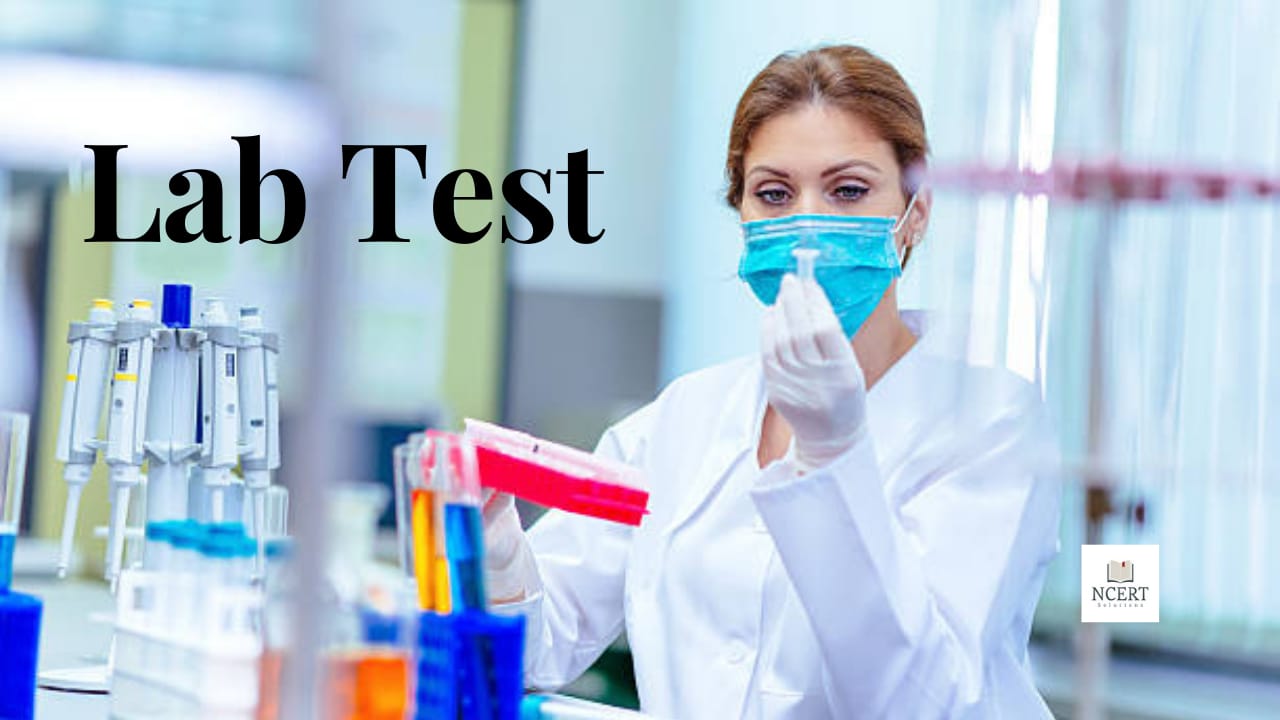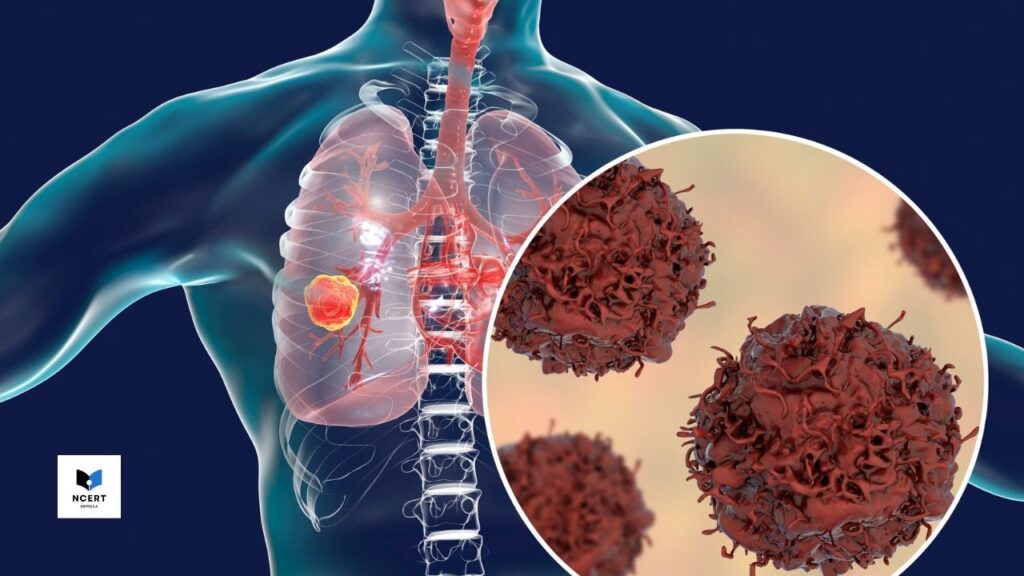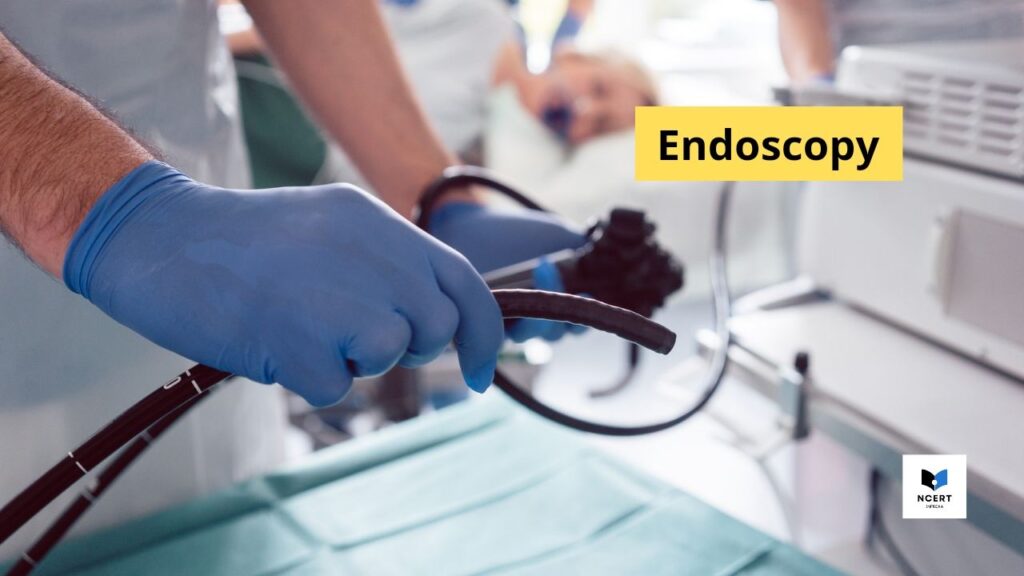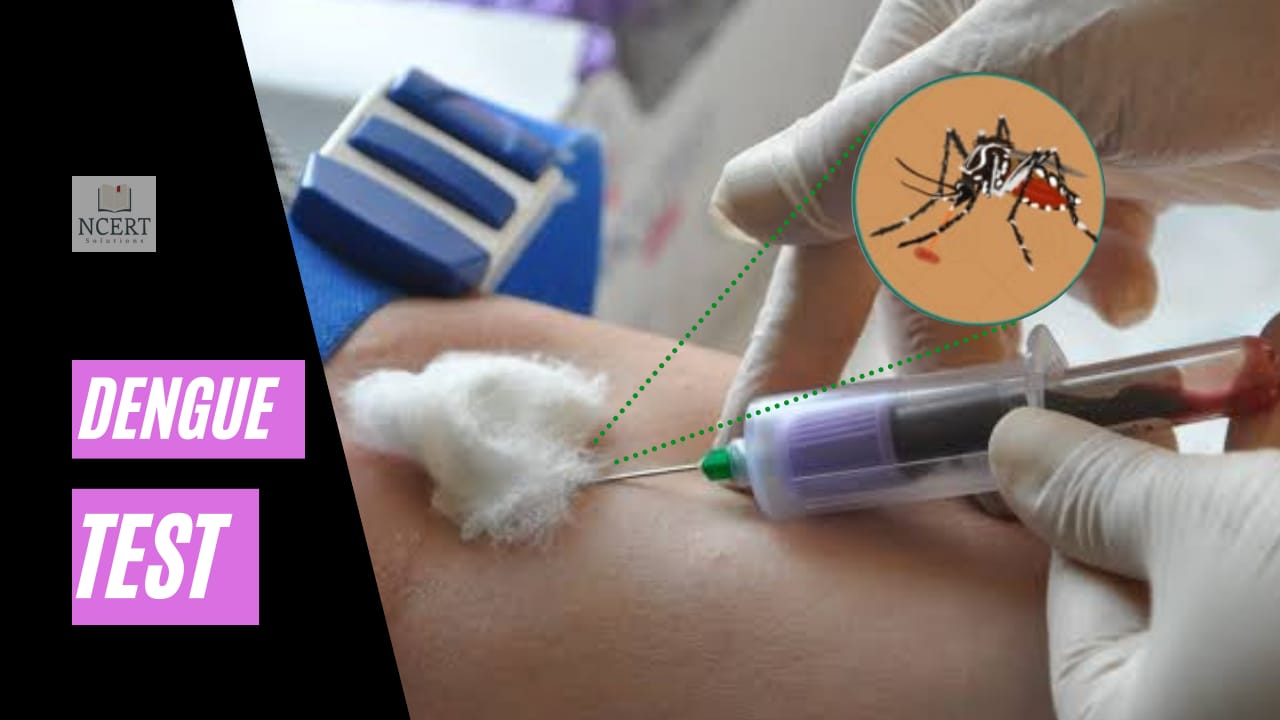Lab tests are necessary tools for the examination of the patient’s health by the doctors, with the help of which the disease is diagnosed and monitored.
Lab tests help the doctor diagnose conditions, choose the appropriate treatment, and monitor treatment. Some tests are done as a routine checkup, such as ECG, cholesterol and blood sugar tests.
Medical tests in research labs help scientists find out about the pathophysiology of a disease. Pathophysiology refers to the way a disease affects the functions of the body. This especially helps in detecting new diseases and infections and finding their cures.
There are different types of lab tests depending on the condition to be tested, and they require samples of fluid and tissue from different parts of the body. The results are written according to the reference range.
The reference value of a test tells about the normal results of that test. Lab test is made on the basis of the results of those healthy people who have got the same test done in the lab. Here’s how to calculate the different types of tests and their results.
Types of Tests
There are many types of tests available in medical science and your doctor may ask you to have more than one test depending on your situation.
However, the tests can broadly, be divided into the following types:
Body fluid analysis
Many tests have to test body fluids. Fluids that are tested include blood, urine, mucus, sweat, synovial fluid (fluid in the joints) and interstitial fluid (fluid between body cells) such as cerebrospinal fluid (CSF) that fills your brain and spinal cord.
And also other fluids like – pleural fluid (fluid in the chest), and ascitic fluid (which is present in your abdomen).
- A finger prick, venipuncture or heel prick is needed for a blood sample. A disinfected container is given to the patient for a urine sample. Other fluids are usually taken by injecting a needle into that particular area, for example, a spinal tap to take a sample of CSF. In this procedure, cerebrospinal fluid is taken by inserting a hollow needle inside two vertebrae.
- Pathological tests usually include the examination of body fluids, such as abnormalities in the contents of these fluids, the presence of cancerous cells, infectious microorganisms, or antibodies against certain microorganisms (serologic tests). Blood and urine samples are also tested to find out the therapeutic range of the drug in a person’s body.
Genetic testing
Genetic testing helps to find out about abnormalities present in DNA, chromosomes or proteins. This helps to test whether genetic conditions are present or may develop in a person’s body.
This test can be done to detect genes on body fluids or tissues. With the help of this test, changes in the genetic sequence and production in certain proteins are also checked, so that the action of DNA stretching can be detected.
Genetic testing procedures such as amniocentesis and chronic villus sampling are performed during pregnancy to detect congenital disorders in the baby.
Along with this, with the help of genetic testing, certain types of breast cancer and colorectal cancer can be detected at an early stage. This also helps in monitoring and preparing the treatment of these cancers.
Checking the functioning of the body
These tests find out the work process of a particular part of the body, and how that organ is functioning, this includes ECG and EEG tests. These tests check your heart and brain function, as well as liver, kidney and lung function.
Imaging test
No incision is made in the imaging test, in this, the picture of the internal organs of the body is examined by looking at the screen.
Some common imaging tests are:
X-ray
In this test, the person is asked to stand, lie down or sit in front of the X-ray machine. X-rays are radiation that cannot be seen and touched, can pass through the whole body.
Since they pass through the human body, some amount of X-rays are absorbed by large-density tissues (such as bones) while organs with soft tissues cannot absorb these rays.
The remaining part can be seen through a detector placed on the other side of the patient, which helps in taking pictures of the particular organ to be examined.
In such a situation, the bones appear white in the X-ray, and the lungs appear black.
X-rays can be used to view both bones and soft tissues. It is also used to check teeth and bones injury, lung problems, breast cancer (X-ray mammogram) etc.
If any metal goes into the body of a person like coins etc., then X-rays also help in detecting their location and presence.
X-rays also help guide surgical procedures, such as metal implants in the proper placement of bone joints, and the placement of balloons in the correct blood vessels in coronary angioplasty.
Ultrasound
An ultrasound test sends sound waves to a specific part of the patient’s body with the help of a small probe.
These waves touch the tissues of the body and are returned to the probe, which allows the computer to receive specific information and help form a picture of the part being examined.
Photos can be viewed immediately as well as checked for testing later. Ultrasounds are much safer than X-rays because they have no exposure to radiation.
Also, these tests help to see the real-time changes happening in the body such as the movement of the baby in the womb and blood flow in any blood vessel which is checked in Doppler ultrasound.
Depending on the condition to be examined, the probe is either used from above the body (external ultrasound) or inserted inside the body (internal ultrasound).
Endoscopy Ultrasound is one in which a probe is inserted through the end of the endoscope and inserted into the patient’s body so that a picture can be taken.
Ultrasound can also be used to examine the structure and functions of any part of the body. Doctors usually recommend ultrasound in case of neoplasms, stones, lumps, tumors, and cysts in the body.
High-intensity focused ultrasound is a variant of therapeutic ultrasound, in which very high-density sound rays are used to generate heat and remove blood clots. They are also used to cure neoplasms and tumors in the uterus.
MRI
Magnetic resonance imaging or MRI scan uses magnetic fields and radio waves to take pictures of the internal structures of the body. The MRI machine is like a tunnel, the person lies on the MRI table, which moves inside the tunnel.
During the scan, the machine produces a lot of noise and the patient is given headphones to silence the sound. The doctor is in another room, but the patient can talk to him through the intercom.
For patients who are claustrophobic (fear of closed spaces), reclined open and standing MRIs are also performed in some places.
Where the patient is asked to either sit or lie down in the MRI machine. MRI scans can be used to view any part of the body such as bones, joints, and soft tissues.
With this imaging test, the real-time working process of the brain can also be examined.
CT Scan
A computed tomography scan also uses X-ray radiation to take a picture of the internal organs of the body.
However, the CT Scan machine has a special scanner that moves around the body during the scan and extracts a tomographic image of the patient’s body.
The computer connected to this machine collects all these images to form a complete 3-D picture.
That’s why the images from a CT scan are more detailed than a normal X-ray. Also, a CT scan can help to see any part of the body.
Even soft tissues of the body can be seen with its help. Some of the things that a CT scan helps to see include injuries, tumors, blood flow, stroke, and conditions such as pneumonia and emphysema.
Contrast and non-contrast imaging tests
Sometimes a contrast dye is injected into the patient’s body or given to food before the imaging test is done.
This dye is absorbed by the tissues to be examined, which later appear slightly different from the surrounding tissue. After the test, the dye slowly starts coming out of the body.
PET Scan
In a positron emission tomography (PET) scan, a radioactive tracer is inserted into the person’s body. It can be swallowed as a medicine, by injection to a person.
This tracer is absorbed by the tissues and emits gamma rays inside the body. The PET scan machine looks like a CT scan machine and the radiation emitted by these tissues is picked up and the picture of that particular tissue is shown on the screen.
PET scan is much more sensitive than CT scan and MRI because it gives information up to the cells.
PET scans are usually used to test for cancer, to screen and to monitor any specific cancer treatment. It is also used to test for Parkinson’s disease, epilepsy and coronary artery disease.
Biopsy
A biopsy is a procedure in which tissue samples are taken by making a small incision inside the body. These samples are then examined with the help of a microscope.
A small hole is made in the tissue to take a tissue sample, which is similar to a skin biopsy. This is done with the help of an endoscope or a needle.
A biopsy helps to diagnose and monitor the disease. These include cancer, inflammatory diseases, infections, and skin diseases.
Cytology test
Cytology test is a type of pathology test, which is done to read a sample of cells. This study is done on either a single cell or many cells.
This test can be done on a sample of any fluid or tissue in the body. Tissue samples for cytology tests are taken by scraping, brushing, or fine-needle aspiration procedures.
In fine needle aspiration, a thin needle is inserted into the body to remove fluids for testing.
Endoscopy
Like imaging procedures, endoscopy is also done to examine the internal organs of the body. In this procedure, a flexible rod is inserted into the body, with a camera and light at its end.
It can be inserted through an orifice in the body such as the nose, mouth, urethra, or vagina. As the rod goes in, the doctor sees the patient’s internal organs on the screen.
Sometimes a small incision may also be made to insert the endoscope, for example, laparoscopy (to view the abdominal cavity) and thoracoscopy (to view the lungs and their outer lining).
Microbiology Tests
Microbiology tests are those which, along with pathology tests, are performed to identify foreign microorganisms and see which antibiotics will work best against the identified microorganisms.
These, Microbiology tests can be done on any fluid in the body, such as blood, mucus, saliva, urine, and CFF, or on tissue samples.
The sample is spread on a special culture plate and the micro-organisms are left to grow at a particular temperature.
It takes one to two days for bacteria to grow and 5-7 days for fungi to grow. These microbes are then stained or viewed under a microscope for identification.
To determine which antibiotic will act most effectively on the mixed microorganism, the microbe is placed on a Petri plate, which contains either the antibiotic or a disc of that antibiotic.
The antibiotic that stops the growth of the microorganism is chosen for the treatment.
Pre Test Preparation
For various tests, patients are asked to make some special preparations. While advising to get the test done, the doctor explains all the preparations to be done by the patient.
Make sure that you follow all the instructions given by the doctor exactly. So that the test results are accurate and precise.
It is generally advised that if the patient is taking any medicines, vitamins, herbal supplements or OTC, then he should inform the doctor about it. Because there are many drugs that affect the results of the test.
Here are some special things that are generally asked to do before any lab test:
- Some are told to be hungry for tests. Usually, the patient is asked to give up food for 8-12 hours before the test. However, plain water can be drunk during this time.
- For some tests, a person is asked to drink a lot of water and may be advised not to have certain types of food such as tea and coffee.
- For semen analysis, the patient is asked not to have sex and masturbation for three to five days and it is advised to empty the bladder before taking the sample.
- Women are prohibited from bathing in a tub or getting wet for 24 hours before a Pap smear test. Also, not having sex before the test and using any kind of cream on the vagina is also forbidden.
- For procedures such as biopsy and endoscopy in which an anesthetic is inserted into the patient’s body. Patients are advised to bring a relative or friend with them.
What to ask a doctor before a test
Usually, before the test, the doctor explains the whole procedure to the patient, especially when the patient is afraid of needles.
However, if you are still worried or have questions related to the test, then you can ask it without any hesitation to the doctor.
Before getting the test done, you must ask the doctor the following questions to know the risks and complications involved in it:
- What is the purpose and procedure of this test?
- What are the potential risks and complications of this test?
- Do I have to keep certain things in mind before, after or during the test?
- When will I get the test results and what will happen to the results?
- Is there anything that can affect the test results?
If you are still worried then take a deep breath and try to keep yourself calm and inform the doctor about it.
Lab Test Result
The results of many tests are written in a table indicating the reference range and test results. The reference range is the value that the lab considers to be the standard value and is considered normal.
It is important to note that the reference value may be different for each lab, and results that are considered normal in one lab may be abnormal in another.
If your results are in the normal range, it means that you are in perfect health and do not have the condition for which you were tested.
However, results that are higher or lower than the reference value are considered abnormal, which means that you are not healthy and the condition that tests to identify is present in your body.
Sometimes test results of these tests can be falsely positive or negative. If you appear healthy, your doctor may do other tests to confirm the test.
An indeterminate result means that the disease has not been detected in the test and in this case, you will have to undergo further tests.
How much does a lab test cost
The cost of any lab test depends on various factors such as the lab in which you are getting the test done, the test is done, and the sensitivity of the test.
In such a situation, the cost of some blood tests starts from Rs 100, which can be free or up to Rs 50 in government hospitals.
At the same time, the cost of the electrophoresis test can be up to Rs 7000 in a private lab. Microbiology tests, especially culture tests, are a bit expensive.
They start at Rs 500 at any location and can cost up to Rs 10,000. At the same time, these culture tests can be done in government hospitals for Rs 50 to 250.
Radiology tests like MRI can cost Rs 2500 to 3000 in government hospitals, while in private labs it can range from Rs 3000 to Rs 20,000 depending on the particular organ.
Similarly, the price of X-rays anywhere starts from Rs.250 which can go up to Rs.5000.




